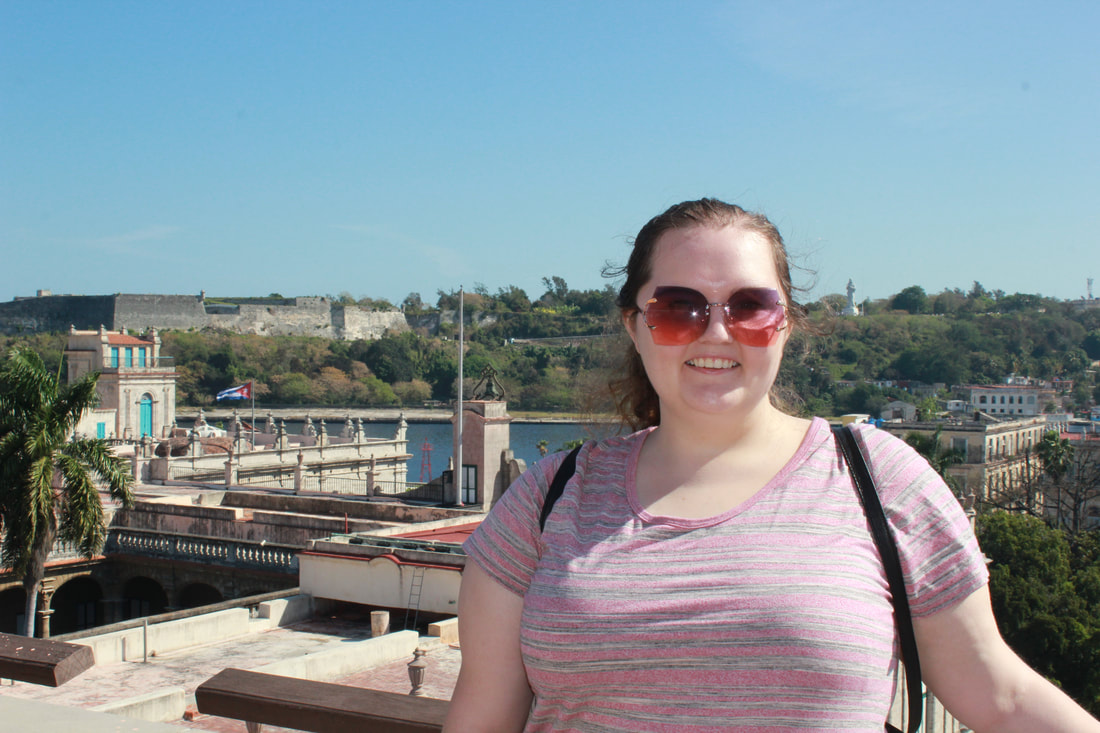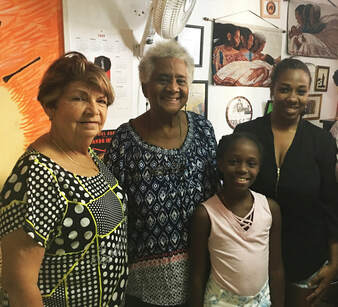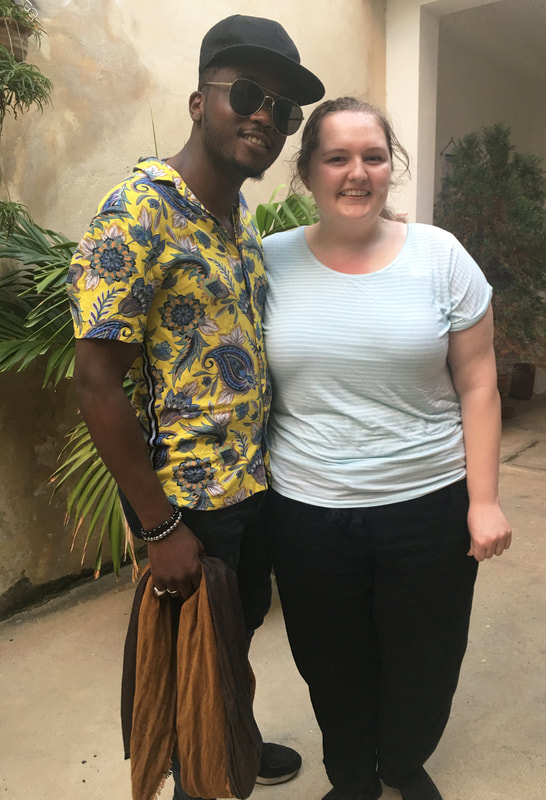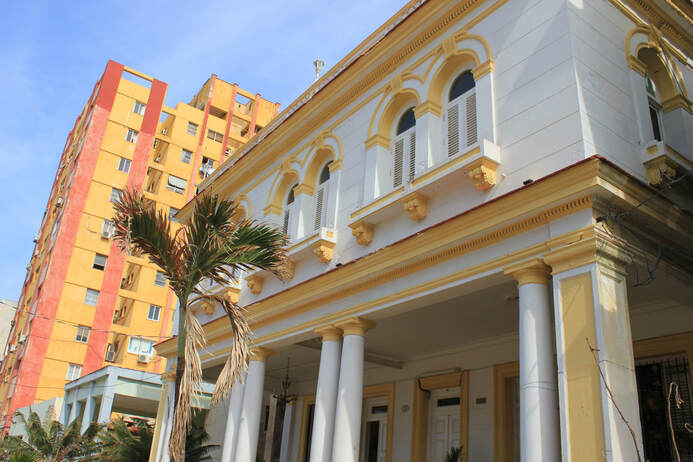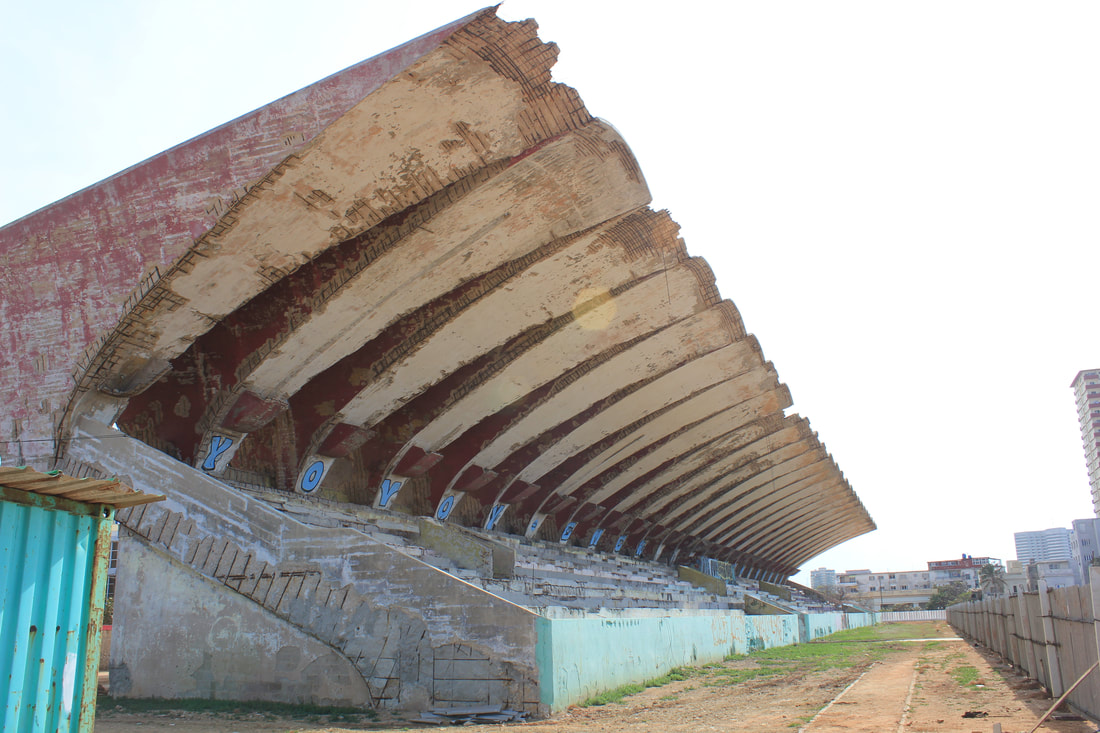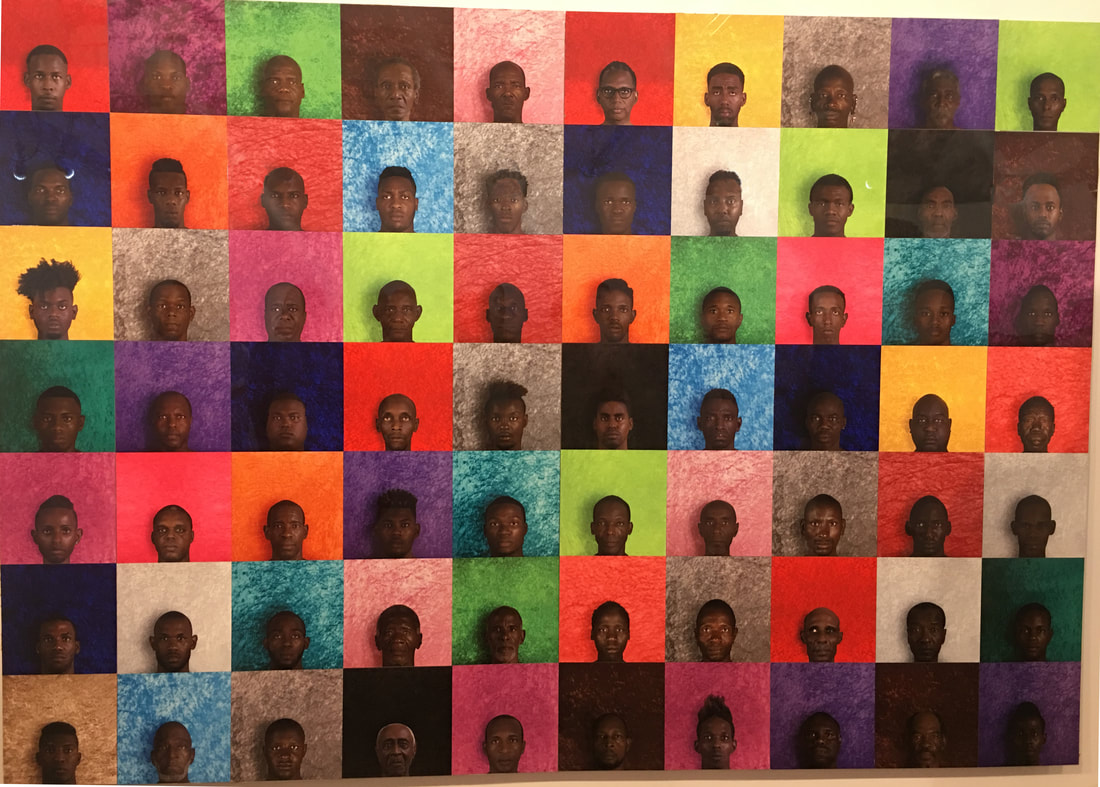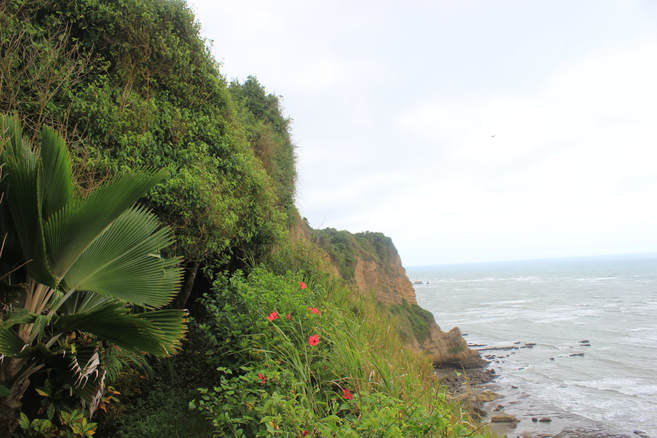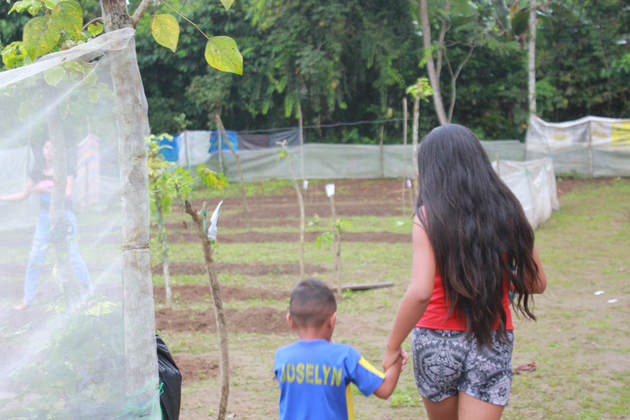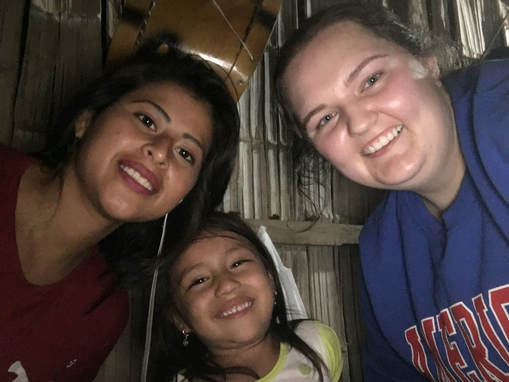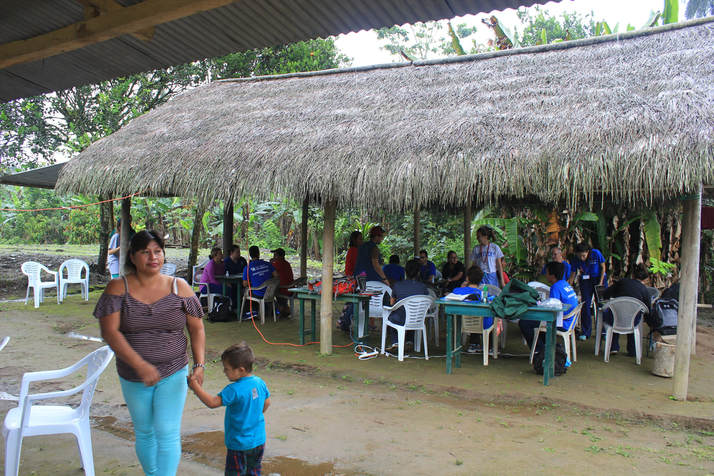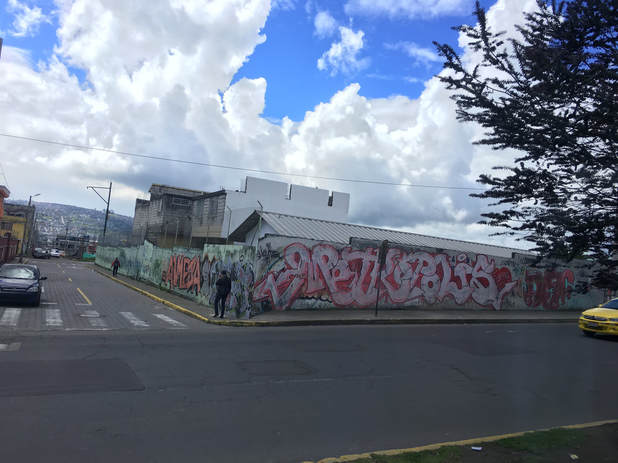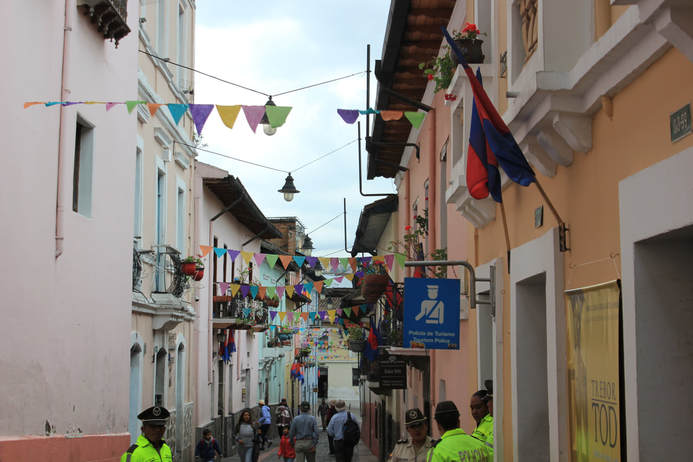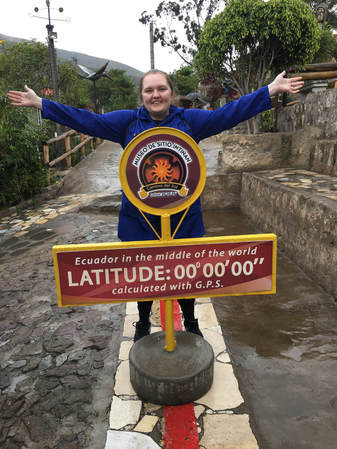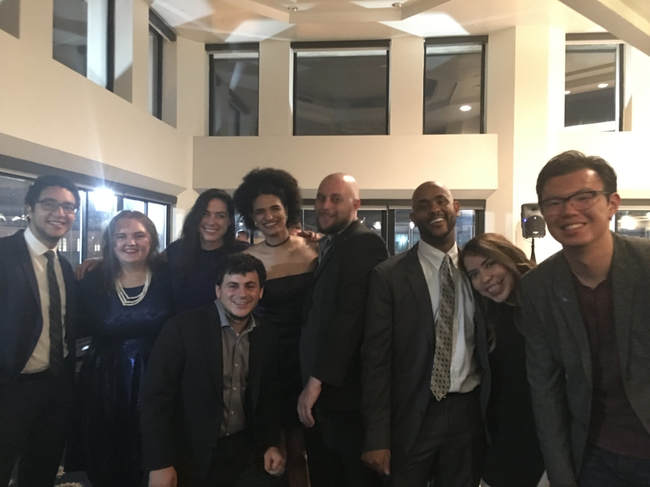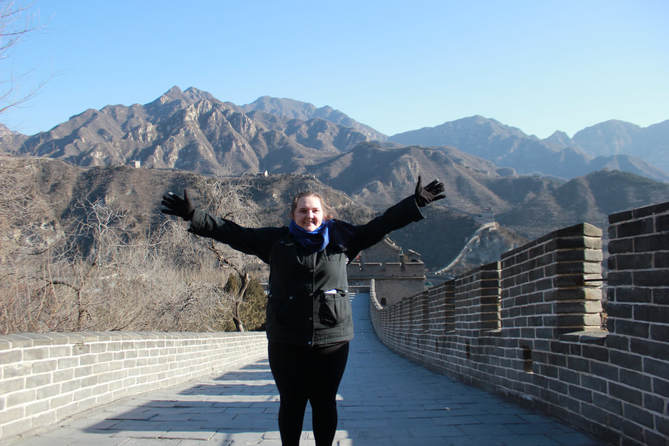In this way Cuban identity is allowed to peacefully coexist with religious affiliation, as long as you remember you are Cuban first. Being Cuban first was a common theme throughout the trip.
At 78, Martha stole the show with stories about “Mangos” or juicy women, and stolen kisses she had with a coworker she was pursuing. Her descriptions and reading of a poem she’d written her love interested had me in stitches. Religion with African Roots in CubaThe following meeting was at the community center of a Cuban artist Salvador Gonzáles Escalona. His center highlights the influences of slavery on Cuban religion, dance and art. The man who led me through the center was very clear that: “There is no African religion in Cuba, only Cuban religions with African roots.” The three main religions with African roots that still exist in Cuba today are Santería, Palo Monte, and Abakuá (a secret society just for me). Santería, meaning ‘worship of saints,’ combines elements from the African religion of the Nigeria’s Yoruba tribe with Catholicism. Many of the Santería gods, or orishas, bear a resemblance to Catholic saints. Because Santería exists in harmony with Catholicism, the most common religion in Cuba, the religion is popular. My favorite orisha was Changó, god of fire, thunder, music and dancing. His favored animal is the turtle, which is why he quickly drew my interest #TurtlesRock.
Cimafunk’s very name is derived from the term cimarrion, or a person who escaped slavery and fled into the mountains and caves in the Cuban countryside. Yet, he was reluctant to discuss either his own heritage as an Afro-Cuban or the influence on his music outside of “American culture” he heard on his uncle’s cassettes while growing up. He did, however, describe his music as “alternative fusion.” And if you visit his website it’s clear that fusion comes from a mix of Cuban music and African rhythms. My favorite quote from the conversation was - after a bit of back and forth where he seemed reluctant to discuss his heritage or musical influences but had admitted he got his start singing in church as a child - I asked if he still sang in church. Cimafunk laughed and said, “I left the church. I am the church now.” When I first spoke with him, he hadn’t yet visited the United States. But that won’t have lasted long as Cimafunk will be in DC performing in on Thursday in DC - and guess who got tickets?! The first thing you notice in Cuba is the colors. The lush foliage, the colorful clothing, the brightly painted old cars, the personalities and complexions of her people. My first day in Cuba was enlightening, to say the least. The surface culture that everyone talks about or notices - the poverty, the rundown architecture - it’s there. But there’s also a thriving culture of art, dance and music. After dropping my bags in my room, my first mission was to explore the local neighborhood in Vedado, a mostly residential area about an hour or so walk from Old Havana. I walked through the streets discovering priceless gems of gorgeous, well maintained buildings and equally run down ones as well. Some were restored and up kept on the outside, but were full of construction materials and sandbags on the inside - though throughout the week I would see the appearance of inhabitants possibly on upper floors. Other buildings right next door were in dire condition but clearly life continued on the inside.
I stayed at Fabrica until the early hours of the morning with two other graduate students. We danced and listened to the live band staring Adrian Berasain and I was introduced to the popular song Guantanamera. Meaning a beautiful girl from Guantánamo - no, not the American Naval base, the Cuban Municipality of Guantánamo.
It was the very early hours of the morning because at one point it went from midnight to 1 a.m. Aka a very unexpected time change considering it happened a full two hours earlier than my phone switched. Look this up if you don’t believe me - but the US has the time change at 2 a.m. and in Cuba it occurs at midnight. All in all, a wonderful and fairly unexpected first impression of Cuba. After spending the night in a hotel – for the soul reason of taking a real shower and getting my clothes washed – I departed for Estero de Platano. Let me tell you, traveling by bus in Ecuador has ruined me for all other forms of public transportation. 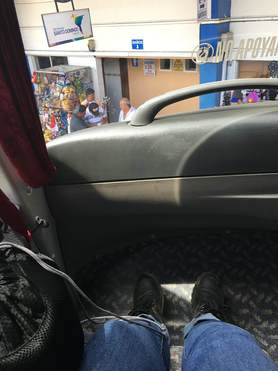 On my first bus, I was given a front row window seat with my very own foot cushion. Best part? It cost me all of $5.50 and I was able to walk right up and board without having to go through hours of security or waiting or all of that other nonsense that usually accompanies public transportation. My second bus wasn’t quite as comfortable (nor did it arrive on time). Instead, I ended up having to get a refund for my ticket and purchasing a third ticket (which was $4 because the lady charged me the ‘foreigner price’) of the day and waiting almost three hours for a bus from Esmereldas to Estero de Platano – but still better than flying if I’m being honest. I finally arrived in Estero de Platano just before dark only to discover I had no cell reception and no one in town had wifi. Deciding to worry about it in the morning, I ate dinner with my new family and went straight to sleep. The lack of reception and wifi didn’t bother me. I’d prepared to not have wifi during the duration of my trip and was pleasantly surprised when Cristina’s home had wifi. But I was unprepared for the inconvenience of not having cell reception at all, meaning I couldn’t even use my data plan to send messages home or check my email. Leading me to an impromptu to trip to a ‘nearby’ small city, Atakambes, on the first Saturday with Sonia and Katryna. This was also a long process because we missed the bus and had to wait for a random pickup truck to drive by and take us part of the way there. Let me tell you, speeding down a road full of potholes perched precariously on an unsteady bench in the back of a truck, clinging on to the side for dear life, was an adventure in and of itself. In Atakambes, I found an Internet Café and finally checked in. I was unable to access anything except Facebook (because Gmail’s security measures are ridiculous) to contact my family, and was left to use my phone data to conduct other business aka email and Instagram. 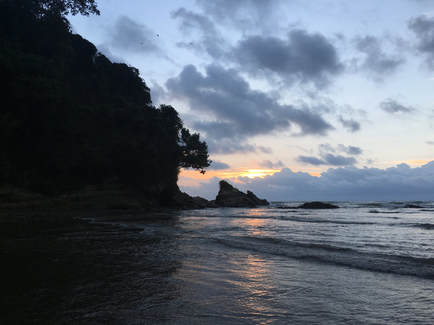 The subsequent days in Estero de Plantano passed relatively quickly. There’s nothing to stress about in Estero, including what’s going on in the rest of the world. While there is a TV, and we did watch the news every morning, afternoon, and night, I wasn’t spending hours on my phone receiving breaking news updates about the current state of America. Nor was a constantly checking emails for news about internships, jobs, funding opportunities, grants, etc. 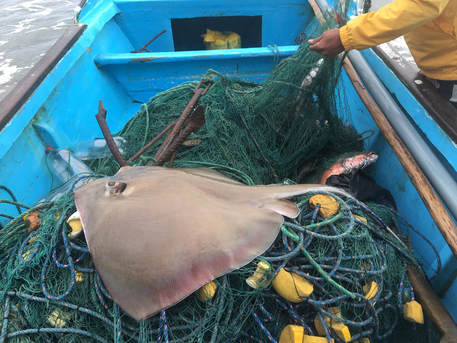 I was able to simply be in Estero. Meaning, I was able to visit with a community group, a parents group at the school, wash clothing with the women in the river, play with the little girls in the ocean, tromp off to the fields with the farmers, and wake up at five a.m. to join the fishermen on the black early morning waves as they hauled in their catch. I also spent a lot of time in various hammocks being fed various wild fruits. Or walking barefoot on the beach in the sand, taking a zillion and one photos of the gorgeous landscape of my basically private beach. It was amazing. It gave me a lot of time to think, read, and relax – three things that I either 1) do too much of, 2) don’t do enough of, or 3) never do – in Estero. I’m not sure I’d have been able to literally turn off and walk away from the rest of the world and concentrate solely on myself and the place I was at so completely if I hadn’t been literally forced to do so, but it was a nice break regardless and something I’d recommend others try out. Spending two weeks on the beach without your phone isn’t a bad way to spend the summer during grad school. Sunburns, bug bites, blisters and all. Up next: my trip to the Galapagos Islands!!So this week has been whirlwind! I’ve been wrapping up one of the stories I’m working on by a visiting a local vegetable garden and interviewing a man from the Ministerio de Agricultura, Gandería, y Pesca. 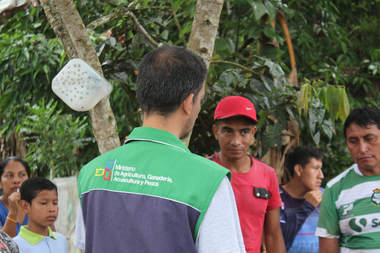 Yeah, on camera. It was awesome. Grade-A moment for a journalist in a foreign country. Have no fear, I stayed true to my goals and also made sure to speak with the local Tsa’chila women about their thoughts on the garden, since they’re the people whose voices are often not heard. It was amazing to see the community response to the project – which is a family’s personal garden that will also be used to feed the school children vegetables. As I’ve learned during my time here, until recent efforts (led by the woman I’m living with, Christina,) there’s been a significant lack of vegetables in the Tsa’chila diet. She’s studied nutrition in Santo Domingo, and has been a major part of efforts to aid in teaching other women ways to cook the vegetables and overall health within the community as well as recovering indigenous plants. 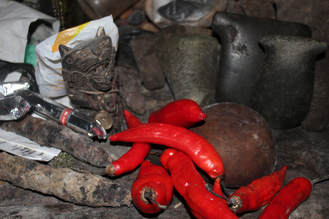 After visiting the garden, my friend Julisa and Josenka walked me a little over a kilometer down the road to visit a traditional medicine man for a health and cleaning ritual. Not that I knew that’s what we were doing at the time. To be honest, my grasp of Spanish is pretty good, but there’s still about 20-40% of any given day where I have exactly zero idea what’s going on. This usually leads to some pretty exciting adventures – which is what followed. Unfortunately, the man wasn’t home but his son still allowed me to peak into his healing room, which I was honored by. 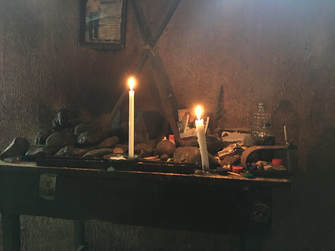 So instead, we walked all the way back to the home of the woman whose garden we’d been at that morning! I was taken into a padlocked room with Julisa acting as a translator from Tsafiki to Spanish. During the cleaning ritual, the woman had me remove my shirt and then spray/spit a variety of different liquids at me before rubbing the liquids in with two different eggs. Not going to lie, the egg-head massage relaxed me to the point where I was so tranquilo I nearly dozed off. Both the woman and my friend kept checking in on my and asking if I was okay, and at one point if I’d done the ritual before (I hadn’t). I’m not sure if they were curious as to why I was taking the ritual so well, or if there was another reason the woman thought I might have done the ritual before, but it’s a mystery that will just have to remain unsolved! The point of the ritual is to remove the bad spirits and to promote good health. Both of which I’ll gladly take any day! The most interesting thing to think about the traditional ceremony, is that it goes hand and hand with Catholicism. Without going into a semester’s worth of detail, (it’s definitely something I’d recommend reading up on if you’re interested in the topic) I’ll just say that a lot of the indigenous practices influenced Catholicism in Latin America and it’s wonderful so see some of the traditions remaining to this day and being practiced by both men and women respected in the community for their role in the traditional practice. Afterward, Julisa asked several times if I was all right and if I’d enjoyed the ritual. I had, and again, I was honored to take part in the ritual beyond what is done in the cultural celebrations for the tourists. Also this week, my friend helped me wash my clothes during a trip to the river. It was mostly socks and underwear. She helped me (insert: ‘did it mostly for me’ because any time I tried to help she’d watch out of the corner of her eye and either ask me if I wanted her to do it again or would just take whatever I’d been ‘washing’ and do it again) wash everything by hand. I didn’t get any photos that day, but did manage to capture dozens later this week when we went to the grandmother’s house and washed all of the family’s clothes and bedding. It was amazing to watch three generations of women gather and laugh and splash each other while spending hours washing clothes. It was equally impressive to watch the four-year-old mimic the actions of her sisters, mom and grandma while washing her ‘very dirty sapo.’ Life in Bua is remarkable and goes way beyond what most people (cough, tourists,) get to see. This is growing increasingly clear as I conduct light research via Google and Google images and am only finding information and photos shared that could have come from the same cultural celebration I saw last Monday when the traveling medical brigade was in Bua. I’m glad I was able to see it, just as I’m glad I’ve been able to see more. Specifically, daily life that doesn’t involve frequently ink tattoos or red berries in the hair (both traditional cultural practices of the Tsa’chilas). Living with the Loche Calazacon family has been a literal once in a lifetime visit that hardly anyone is fortunate enough to experience. I’ve also marveled at my unique perspective that has enabled me to do and see more that if I were anyone else. Basically, being young and female has opened doors that I normally perceive as being harder to open in other situations. But these two characteristics, mixed with my general flexibility and easy-going attitude towards my adventure, have granted me opportunities to live amongst this predominantly female family and participate in activities that I would likely not be welcome in if I weren’t female. Furthermore, my age, which is often my biggest curse, is a blessing. I’m only enough to be perceived as an adult, but young enough that it’s not odd that I’m unmarried or without children or a family of my own. I’m able to mingle wit the other female young adults who are equally unattached in the community. I do hope that you’ll all stick around to read the journalistic articles I write about my time in Bua and watch the videos I’m going to produce upon return to the States. Until then, I hope you’ll enjoy following the rest of my adventure in Ecuador. Next: I travel to the second indigenous community, on the Pacific coast of Ecuador.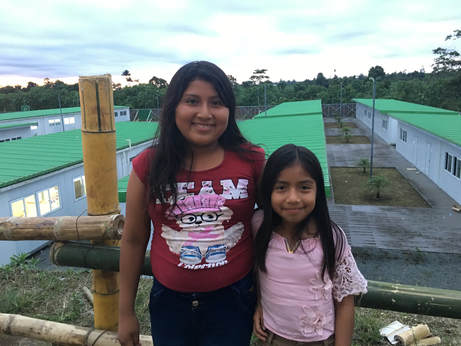 Sunday evening I was invited to go with Christina, Milena and Yosenka to the church. It was a short walk, which reinforced the notion that the central part of Bua is basically Christina’s house. Church turned out to actually be Sunday School, with about 50 kids from the age of seven through their early teens. I made several new friends, all of whom gave me flowers they picked after the lesson was over. It was really fun to try and follow the lesson as well as whisper with the little girls in the back row who were very interested in my presence. I was also given homework for next Sunday, which I dutifully started and was surprised to discover part of the lesson is written in a language other than Spanish. I asked Yosenka about it and she said it’s the language of the Tsa’chila, which made sense. When I visited Santo Domingo I’d noticed some of the signs in the Tsa’chila government building weren’t in Spanish and whenever Yosenka’s grandmother speaks to the cats and dogs, I could tell she wasn’t using Spanish. So I knew there was another language involved, but I didn’t know if it was wide spread or commonly spoken until I asked the girls. They said their grandparents and father speak the Tsa’chila language really well. They also said they speak it. When I continued to ask, they said they prefer Tsa’chila over Spanish, and so do most of the people living in Bua (according to data from the Medical Clinic that I’ll get to later in this post). Getting back to the Church, it was also interesting to think about the implications of the Catholic Church translating the messages from Spanish into the indigenous language – which is exactly how Catholicism spread hundreds of years ago. On Monday morning I followed Yosenka to school. She and I had talked about it, but I hadn’t gotten the chance to speak to her mom about it until Monday morning. I assumed Yosenka would have mentioned it, which was my bad, since she hadn’t. But her mom fed me breakfast and sent me off to the school alone since I was several minutes behind when class was supposed to have started. As I was walking over, I thought ‘the worst that can happen is I get kicked out of an elementary school.’ I arrived and it took me four tries out of four to locate the correct classroom. I ended up having to ask three of the teachers, only to have them be clueless and have the kids point to the correct classroom, before I located Yosenka. A brief conversation in Spanish with her surprised teacher ensued and I could tell something was up, but didn’t understand enough of what he was saying in rapid Spanish to try and figure out what it was. Also, since he didn’t seem overly worried about it and the kids accepted my presence, I let it go. For the next hour or so I followed the little kids around the room as they showed off homework projects and started working on a new project in groups. They were all requesting that I draw rabbits and trees on their new project – a group drawing exercise as far as I could tell. At around nine, another man arrived and started to talk to me in a new bout of rapid Spanish. At which point I did finally pick up on what was wrong. Basically, I hadn’t sought permission from the principal or school director to be there (which again, I hadn’t known I needed, but my bad). I apologized and said ‘yes’ a bunch of times, and then he left. The children had all gone quiet and were very subdued but since no one said anything to me or seemed to expect me to leave, I continued to sit quietly and observe the children color. About fifteen minutes later the teacher came back over to me and asked me why I hadn’t spoken to the director. I tried to explain that I hadn’t known and I was sorry, at which point he also backed off. I didn’t really know what to do at that point. I didn’t really want to leave, but was beginning to think that’s what I needed to do, but at the same time no one seemed to expect me to leave or had told or asked me to go. Another five or ten minutes passed and the teacher finally pulled Yosenka aside and I tried to hear what he was saying but didn’t catch much of it. She came back over she was very quiet and I asked if she was okay. She said yes and then quietly explained that I needed to go back to the house. I nodded and smiled, hoping I hadn’t gotten her into too much trouble, said goodbye to the teacher and class and dipped out. When I got back to the house I explained to Christina that I wasn’t sure exactly what had happened, but I thought it had to do with a lack of communication between me and the school director. I told her I didn’t mind/was worried about it, but that I didn’t want to have gotten Yosenka into trouble. Christina seemed to brush the entire thing off so I guess I’ll wait until Yosenka comes home to see if it’s ok. Although, Christina might have brushed the entire thing off because there were eighty people sitting in her front yard. Either medical personal or people waiting to be seen. I’d known they were going to have a clinic on Monday, but I’d honestly expected one or two doctors from Santo Domingo and that it wouldn’t be very big. I was wrong. It was big. The number of doctors and other medical personal outweighed the people waiting, which is probably a good thing for the patients. I asked around and there were about 76 medical staff at Christina’s house, which was about half of the traveling brigade. And by the end of the day, 83 patients had been seen. The medical staff were everywhere, inside the side part of the house, under both outer awnings, and even stationed under the awning directly in front of Christina’s door. It was raining, so that might have been part of why they were stationed how they were, but something tells me that it is fairly normal for them to be set up this way. 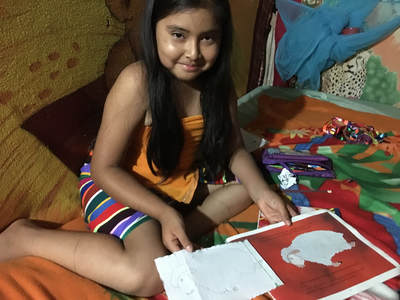 The traveling brigade is part of the University of Kentucky and Ecuadorian students who acted as translators. They take part in this brigade every few months and visit the same Tsa’chila communities year after year. Several of the medical team had taken part in the brigade before and said the best part was seeing some of the same people again. The day closed with a cultural presentation that was fascinating, not only because it was interesting, but also to watch the reactions of the ‘volunt-tourists.’ It was particularly fun to watch the medical team leave in their tour bus and spent the rest of the evening with several of the local girls learning phrases from the Tsa’chila language. Next: I interview a new friend's abuela about her knowledge of indigenous plants as medicine.I woke up on my third morning in the comua thinking that I might not make it through this journey. The night before had been a Friday night, and dozens of teenage boys had gathered in the shelter right outside of the family’s house and my separate bungalow. Others were gathered a little ways off in a patch of trees nearby. When I asked who all of the teenage boys were, since they never seemed to venture closer or have much contact with the family, I was told that they were simply local teens who came to the Calazacon home for the Internet. Anyway, on Friday night there were a lot more teenagers than on the previous weekday nights, and they stayed up passed one a.m. blaring music and roaring their motorcycle engines. I took a nap after dinner, but woke up around 10:30 p.m. and was awake until the last one left. I then woke up promptly at 6:15 a.m. to the sound of screeching chickens. Lovely noises. I was also sore from falling the day before. The girls had taken me off-trail hiking down to a gorgeous little stream. They were in plastic crocs and I was in my sneakers (but probably would have still fallen in my boots). I was just really glad I hadn’t taken my backpack with my camera and my microphone on this hike or I would have landed on it along with my butt. The soreness wasn’t helped by sleeping on a thin piece of foam that does nothing to keep me from basically sleeping directly on the wooden pallet below. I also am covering in bug bites (from sand flies, not mosquitos) and have to keep wearing extra layers to try and keep them off not to mention my 100% deet spray that doesn't seem to scare the little buggers.
Also, the wifi was out and I’m not sure when or if it’s every coming back - the answer i was given was unclear, mostly because I'm still struggling to interpret rapid fire Spanish. So I was having a hard time getting any work done. (Update: it came back on like two hours after I wrote this post). All in all, I woke up pretty down. But Saturday turned out to be a pretty spectacular day. I ate breakfast with Yosenka, a delicious meal of cheese empanadas – definitely my favorite dish so far. And afterwards was invited to go with Franklin and Yosenka into Santo Domingo. We hiked up the hill to the road and stood around waiting for a truck or a car to pass by that would take us to the city. It took about fifteen or twenty minutes, no one seemed to be counting, before we caught a ride. Along the way we picked up another Tsa’chila boy I’d met the night before and hauled him with us to Santo Domingo. In the city, Franklin, Yosenka and I visited the Gobierno de los Tsa’Chilas, where Yosenka attends classes with other indigenous children. After Franklin’s meeting, we ventured into the nearby market where he dutifully crossed off a hand-written list item by item. It took several hours, during which we stopped for Almuerzo, before wrapping up by buying Yosenka new shoes. Getting back was almost as much of an adventure and had us waiting at another bus stop for even longer than we’d waited for our ride that morning. Saturday was also extremely pleasant because it was cool most of the day (this was because it rained lightly on and off and then poured in the evening). But hey, for a girl who hates the rain, I was willing to take it because it was a relief from the sweltering heat of Friday. Getting to the second destination on my adventure was no easy task. It started with my dragging my heavy duffle bag and backpack full of camera equipment all over Quito in search of the bus that would take me to the bus station. In the end, I took a cab. Then, at the bus station I was able to mangle my way through a conversation and purchase a ticket to Santo Domingo. Except the ticket I purchased was for a bus leaving at 10:50 a.m., and it was only 9:30 a.m. This glaring error was made even more apparent when a bus going to Santo Domingo rolled up at 9:40 a.m. and I couldn’t get on it. Everything worked out in the end and I took the scenic route to Santo Domingo for $3.75. My adventure didn’t end once I got to Santo Domingo. Instead, I had to start asking every taxi driver I encountered if they knew where Bua was (the indigenous community I was staying in). The first man didn’t know and waved me onto the next driver. He didn’t know either, but he knew a good thing when he saw it and wasn’t willing to wave me off. He called at least three different people asking them if they knew where Bua was, and none did. It wasn’t until a nice man on the side of the street walked up and said he knew about Bua. He gave me (aka my taxi driver) directions and since the man seemed to know what he was talking about, I finally hopped into the cab. I’d been told to have the driver drop me off at the school in Bua and then walk backward to the house I was going to be staying at. But when the driver asked a random teenager if ‘this was Bua’ and we received an affirmation, I asked the kid if he knew which house belonged to Christina. He said something in Spanish that I didn’t catch, but fortunately my driver did because he turned around and dropped me off in front of a sprawling property. I’d finally made it to my destination. 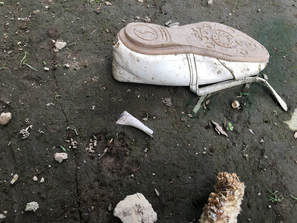 This was the first photo I took while walking around the 'backyard' (aka jungle) with the girls. This was the first photo I took while walking around the 'backyard' (aka jungle) with the girls. I keep calling Bua a community, but that doesn’t really describe my current location. In Spanish, we don’t refer to Bua as a ‘comunidad,’ but as a ‘comua’ or gathering. The difference being that Bua isn’t really a town or community in the Western sense of the word, but rather a geographical location in which many Tsa'chila families have made their homes. The Tsa'chila are a somewhat individualistic, although not in the same way as Americans. Instead, the Tsa'chila people live in large family groupings and are communalistic within those families, but not very community orientated outside of the family. Also, I found it highly interesting that I viewed them as communalistic within the family, but was then surprised when the children did differentiate between their abuela’s dog and their papa’s crops versus calling them ‘the family’s.’ If anything this just shows how limited my current comprehension is on the subject. I’m not an anthropologist, and a lot of these conclusions are based on only a few days worth of observations backed by information from the Yanapuma Foundation that has closely worked with members of the Tsa'chila, but this is my understanding thus far. 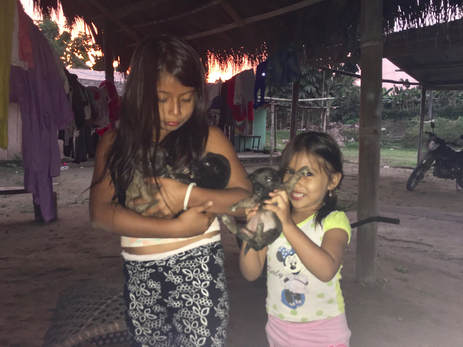 Yosenka, 8 (left), and Ashley, 4 (right) with three of the five puppies ranging from six months to so young they don't have their eyes open yet. Yosenka, 8 (left), and Ashley, 4 (right) with three of the five puppies ranging from six months to so young they don't have their eyes open yet. The family I’m living with consists of a set of parents, Christina and Franklin, a 15-year-old girl named Milena, a 13-year-old boy named Jesus, and two younger girls, eight-year old Yosenka and four-year-old Ashley. (Yes, my four-year-old host sister in Peru was also named Ashley). Frequent visitors, especially at meal times, include Franklin’s parents and various uncles. There are also numerous perros, perritos, gatos, gatitos, and muchos muchos pollos running around. I can’t really comment a lot yet on the daily lives of the family. Mostly because I’ve not really been allow in. I’m hoping with time I can gain their trust and build that bridge in order to deepen the communication. Right now, I’ve been relegated to a place among the children. I eat with the girls; I play with the girls; I have the same responsibilities as the girls, which is to say none. That being said, I’m the girls’ responsibility. They have to look after me and seek me out when it’s time for meals and hold my hand (literally) when we’re walking across rough terrain. None of this is to complain, rather, things I’ve noticed. I’m not expected to help cook or clean with the other women (although as far as I can tell neither is the other teenage girl – only Christina and the abuela), nor am I assigned the occasional light chore like the little girls. At the same time, when I appear, the girls are expected to stop what they’re doing and more or less cater to me. So even though it’s great fun, it’s also exhausting because the little girls are constantly off doing something; even when we’re sitting waiting for dinner they’re running back and forth and giggling. As far as I can tell, this is what the little girls would do every day even if I weren’t here. They explore their property, they swing in their hammock, they play with the numerous puppies and kittens. One thing that the girls seem to look forward too beyond their normal play is trips to the river. In the two days I’ve been here (at the time of this post) we’ve gone to the river twice. The river is where the Tsa'chila shower, wash their clothes, and sometimes even retrieve water for the home. I love swimming and nature, but I also love clean clothes and warm showers. Guess it’s a good thing this is an adventure! Next post: I take a trip to Santo Domingo with Franklin and Yosenka and visit the market.
Luck be with You The morning of my adventure, I woke up and had plans to take the red line metro about 80 stops over the course of an hour with my heavy, giant duffle bag and stuffed backpack. Those plans changed when I saw how cheap a Lyft across the city would be (about $8 – which included the tip I gave the guy because he was so awesome). From there I took the green line four stops to the end and then waited about half and hour for the BWI metro bus. All in all, it took me about three hours from waking up until I arrived at the airport – and still cost me less than $9 (because AU students ride the metro for free). 10/10 recommend this method to anyone living over in NW D.C. and trying to get to BWI. 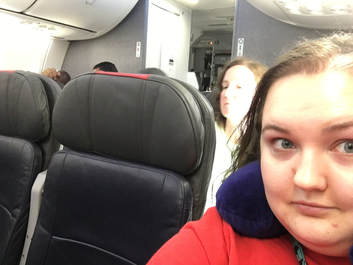 My flights were pretty boring and uneventful… other than the planes were packed and on both flights I managed to score an open row or an open seat next to me. I also managed to score a free bottle of red wine on my second flight, even those American Airlines charges for wine (plus one point for United – also, their dinner is way better so plus like ten… but their tickets were way more expensive so American ultimately was the winner of this trip). I’m crazy lucky. Ecuador Sneakers on the ground, I breezed through immigration, baggage, and customs and promptly found my driver waiting for me in the arrivals hall with a sign with my name on it. (There is no better feeling than arriving in a foreign country after dark, tired, and having a driver waiting for you with directions to a hostel you didn’t even bother to look up on Google maps). Patricio and I spent an hour driving from the airport to the city center through rain and thick fog so I didn’t get a lot of first impressions of Quito. But Patricio was great, driving through difficult conditions and helping me check into my hostel – Hostel Guayunga. After some back and forth with the lady running the front desk, I choose to stay in an eight bed mixed dorm rather than the much more expensive private room. My roommates are great, all zero of them. The private en suit bathroom is also quite nice. Have I mentioned I’m lucky? Travelers tip: ask how many people are staying in the dorms, or check online when booking your stay, because you can score a private room without paying for that luxury. Also, don’t be scared to stay in mixed dorms! I’ve done it all across Europe and now in South America. 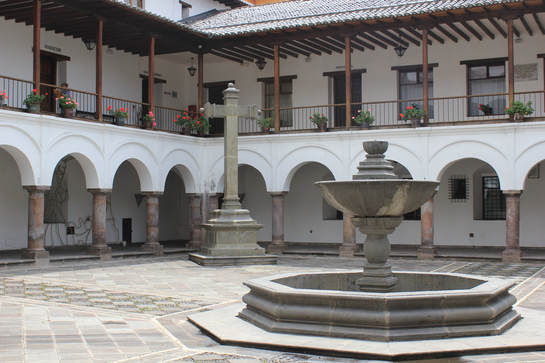 First Day in Quito I was scheduled to meeting the people at the Yanapuma Foundation at 9 a.m., so I set an alarm the night before. Only the sun decided it was enough of an alarm and I woke promptly at dawn. It was worth it, it gave me a chance to settle in and unpack, get dressed and ready, and check out the hostel including breakfast with fresh avocado and bananas with strawberry sauce. After breakfast, I headed to the Yanapuma Foundation to meet with my contact, Andy. We spoke about the two communities I’ll be staying with and I began to form some ideas for the articles and videos I’m hoping to work on. I feel really good about what I’m going to accomplish in Ecuador. Walking Tour Since I had work out of the way, and only one for sure day in Quito (although I’m hoping to be back for a day or two before I fly home,) I went on a walking tour around the Old City of Quito. I love starting out in a new city with a walking tour of the best places to visit and learning the local perspective. The walking tour I went on was led by a native of Quito, so he had the inside dish on a lot of things. Most importantly, he told us the story of why Ecuador uses the US dollar as its currency. (Yes, this is a true fact. I didn’t learn this until the night before I left). I also got a ton of great photos! After the walking tour I grabbed lunch with my new friend Rachel at a local market. Sometimes I’m skeptical of eating food from places like this, but our tour guide assured us he eats there all the time and takes his groups there after tours when they ask for lunch options. So we quickly scarfed and ran back to the hostel because we were running late for a second tour! 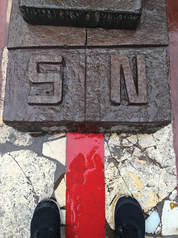 Equator I took a bus tour to the equator and watched a bunch of fun gimmicks and straddled the red line. It was really fun and really cool, despite the rain. My favorite activity was trying to walk the red line with your hands out and your eyes closed. I really thought I’d be able to mind-over-matter do it. Not the case. Instead, I barely made it two steps and stumbled to the side. We then went to a historical monument to the equator. Basically, there’s a difference between the historical location of the equator and the actual (scientifically located) equator. Our final stop on that tour was an overlook over Quito; it was a spectacular view of the city with misty mountains in the background. All in all, I’d say my first couple of days in Quito was a success! Next post: I travel to the first indigenous village!Wrapping up my first year of graduate school, I knew I needed to do something career applicable over the summer. Since this no longer means getting an internship, I started searching for other avenues of opportunity. Specifically, I started in December applying for any and every international program with funding I could find in Europe. I applied for several programs in Germany and was briefly considering visiting my little sister in Ireland. By March, it was becoming clear that I was not, in fact, going to make it to Europe. So I started looking into multimedia opportunities in D.C., but my heart was still somewhere on a different continent. That’s when I saw an email from the School of International Service, my second graduate home, that I found where I’m going and what I’m doing this summer. The Yanapuma Foundation The email was requesting applications for the Yanapuma Foundation, an organization dedicated to working with Indigenous populations in Latin America. Specifically South America. More specifically Ecuador. I’m headed to Ecuador!! Photo by: Jose Pereira, Flickr. Photo by: Jose Pereira, Flickr. I got in touch with the Yanapuma Foundation, an Ecuadorian-UK non-profit based out of Quito, Ecuador. They basically asked me what I wanted out of the internship and I told them: I want to do a homestay in order to get a holistic immersion (something I appreciated and love in Peru) and that I wanted to work with indigenous populations as a journalist, collecting whatever stories they wanted me to tell. So there you have it. I’m traveling to Ecuador on a self-arranged backpacking journalism trip. I’ll spend five weeks living with two different indigenous communities. My goal is to interact with the people in these communities and learn about their daily lives to develop a deeper understanding of their life experiences and culture. My hope is that I’ll be able to collect photos, videos, and stories by also doing some interviews with the aim of writing several articles complete with multimedia elements and even developing some videos upon my return to the States. As a side note, I’m hoping to increase my Spanish while in Ecuador. It’s almost a given, but it’s still a necessary goal because I have to prove a certain level of Spanish to graduate, so I’ll add it to my list. Fulbright Program I’m also working on a Fulbright application for the fall, so I’m using this trip to track down possible sources of a research award in Ecuador. This means I’m going to try to find a university or professor to work with through the Fulbright Program. I am going to put my heart in soul into my Fulbright application, and am trying to finalize which country I’m going to apply for and if I’m applying for a English Teaching Award or a Research Award. This trip should help me figure it out, or make me even more confused, at the nice lady at the American University Merit Office explained to me in my first one-on-one Fulbright prep meeting. What I Don’t Know So I’ve told you a little bit about what I do know about my adventure in Ecuador. Now I’ll tell you what I don’t know.
Sounds like fun! 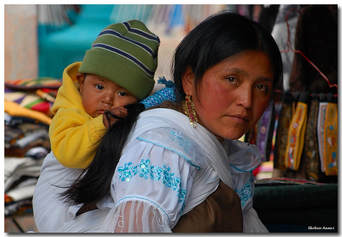 Photo by: Shobeir Ansari, Flickr. Photo by: Shobeir Ansari, Flickr. Packing List I’m going to be in Ecuador during the raining season in the foothills of the Andes and off the Pacific coast, so I’m preparing for mild temperature and lots of rain. I started by buying a new rain jacket and waterproofing spray along with waterproof hiking boots that I broke in by wearing them to see Avenger: Infinity War at the theater five minutes away from my house. I also splurged and bought (weirdly expensive) children’s books in Spanish. It was one of the things I’d really wanted to do before I left, and had a perfect opportunity to find some in a used bookstore after brunch one Saturday. My only regret was that I couldn’t get more because of the non-used prices they were being sold at! I also packed a couple of fidget spinner type toys I’d gotten as stocking stuffers for Christmas that I can give as gifts in the villages I visit. Maybe I’m just being hopeful, but after living with a family in Peru that has two small children, I’m really hoping that I’ll get to spend plenty of time with kiddos in Ecuador! Why the Trip Almost Didn’t Happen If you’ve known me long enough, you might come to refer to me as a ‘ditz’ or ‘dingbat’ or ‘blonde’ (all three of which my family call me on a regular basis even though I’m the only one who isn’t a literal blonde). But no story exemplifies my spacey-ness better than the story of how I lost my passport two days before I was set to travel on this life changing adventure. Basically, I didn’t think to look for my passport until Saturday after noon right before I was set to depart. I ended up tearing through my apartment for several hours before needing to leave to attend a Year-End Gala at the National Press Club. (I’d say it was casual, but it totally wasn’t). I’d planned on leaving the party early to return and continue to look for my passport. But like a good little extrovert, once I was at the party I was at the party until midnight. At which point I returned home and slightly inebriated Hunter took over. This Hunter was very determined (even more so than I had been earlier because #wine) to find that passport and also remembered key information that aided in the search that pre-party stressed Hunter hadn’t recalled. Namely, that the last time I’d seen my passport – in January when I was getting my global entry ID – it had been cold and I’d been wearing gloves (I’d already remember the coat and scarf, but didn’t remember the gloves until several glasses of wine and beer later). Therefore, I ripped open the Tupperware box I keep my gloves and winter headbands in, and found my passport under a pair of llama mittens. Why did I put my passport in the glove box? I have zero idea. And zero memory of doing it. I’m sure there was a perfectly good reason… but I don’t know what that would have been. Moral of the story: something bad has to happen when you travel. It’s Murphy’s Law. So loosing my passport and finding it after a lot of frantic searching means that the trip can only get better! Final Thoughts I don’t have a set plan for this trip. I don’t even have a serious goal. I have a lot of hopes and a few dreams, but for the most part I’m going to see where this trip takes me. I’m going to try and let the people I meet carry me in the most compelling direction and let their stories shape my articles, videos, and blog posts. I’m aware that I’m fortunate to even be given the opportunity to get a glimpse into their daily lives. I keep telling people that worst case scenario is that I spend five weeks on a vacation practicing my Spanish and taking photos… not exactly a worst case so literally anything I create post-trip is going to be icing on an already exceptional cake. I’m extremely excited for what the future holds and cannot wait to update you on my trip to Ecuador! Next post: Who knows! I may not have wifi until I’m back in the States, so stay tuned. Adventure awaits. 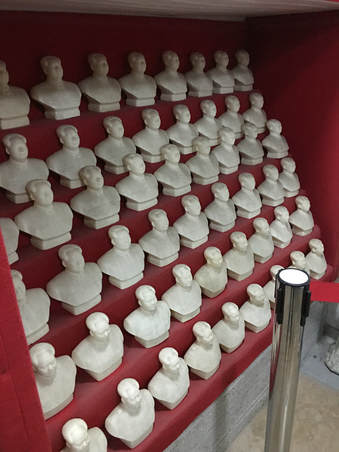 Propaganda We began our day with a trip to one of the museums I’d been most looking forward to: the Shanghai Propaganda Poster Museum. It’s basically a private collection of Soviet era Chinese propaganda posters located in the basement of a random, unmarked building in the middle of Shanghai. You aren’t allowed to take pictures of the prints, but you are allowed to purchase reprints, of which I grabbed several. If anyone ever visits and wonders why I have large, framed prints declaring that the Soviet and Chinese are best bros hanging on my wall. I promise I didn’t take a single photo of the prints in the museum, but I’m going to leave this image of a bunch of Mao statues right here for your viewing pleasure. Dim Sum After the propaganda museum, we drove to a nearby hotel for lunch. But since it was just after eleven and we’d only just eaten breakfast, we were able to delay our final meal and wander around the neighborhood. Everyone refers to Shanghai as an international city, to which I would agree. There was definitely a larger western presence in and I saw more people on the street who did not appear to be Chinese natives. We also didn’t get stared at as much as we did when we were in Xi’an. Lunch at the fancy hotel was dim sum! Which I’d never eaten before. It was something new and fun to try. I saw with our Chinese hosts, including our newest host we picked up in Shanghai. He explained how Shanghai-ese is a different dialect and he grew up speaking both. It was a great last meal in China. After lunch we headed to the airport to say our goodbyes. It wasn’t as hard to say farewell as it might have been at another time of year, but since it was almost Christmas I was ready to head home and spend the holidays with my family. Flight Home The flight home was a wee bit shorter than I was expecting. Less than 13 hours. Which is still an exceedingly long time to be cooped up on a plane with over a hundred strangers. I combatted the time on the plane by listening to an audio book, writing in my journal, and catching up on a few hours of sleep. I definitely didn’t sleep as much on the return flight as I did on the way to China. Either way, the flight still passed rather quickly. I wish I could say the same for the layover. It took forever to get through customs, and then the line for security to get back into O’Hare was even longer. That still only killed an hour of my almost six hour layover. I ended up curling up in an uncomfortable airport chair and straight up passing out in the middle of everything with my arm dropped over my backpack and my head resting on top. Jet leg is real, folks. However, I had hard-core Christmas plans only days a way, so I knew I was going to have to rally. And rally I did. Once I landed in Omaha, drove the car until it was on fumes and finally pulled over for gas at two-something a.m. only to get wolf whistled at by some guys coming out of a bar, and finally making it home and into bed at 3:15 a.m. The next thing I remember it was 3:15 p.m. on December 23. Yes, I slept for 12 hours straight without waking once. My mom said she checked several times to make sure I was breathing and my little sister was within thirty minutes of being allowed to rudely wake me. Either way, it was worth it. Reflections Traveling to China was an amazing adventure that I’ll never forget. It also taught me a lesson that I’ve been struggling to accept: that my future is abroad. I thought moving to D.C. was going to be enough to fulfill my international cravings. But traveling to China proved that I was lying to myself. On the bright side, it cleared up a lot of things about my future. If you’d like to know more, you’ll just have to keep reading my blog… Up next: Where in the world is Hunter going now?? |
AuthorMy name is Hunter and this the blog of my worldwide adventures. The purpose of this blog is to show that you can be a traveler, not just a tourist. Archives
March 2019
Tags
All
|
Proudly powered by Weebly
